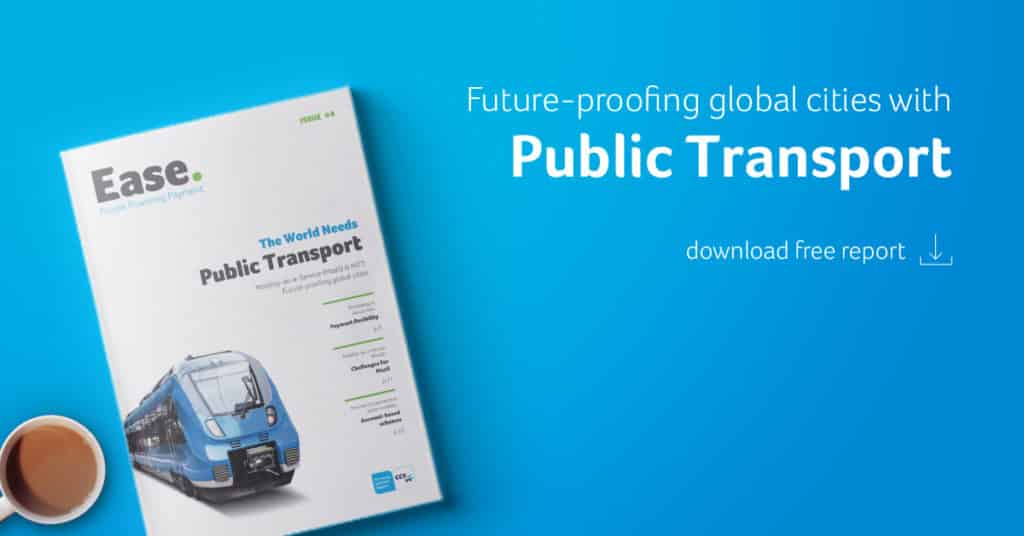The urban mobility industry is changing due to trends in technology and consumer demands. One of them is the use of open loop payment systems in public transport, allowing travellers to tap a contactless card or smartphone wallet on terminals at the gates to enter in less than a second. After arriving at their destination they tap again – validating their end-to-end journey and seamlessly paying for the service.
 We have asked James Timperley, expert in parking and public transport, to share his view on this topic. James has worked with FirstGroup and Transport for London (TfL).
We have asked James Timperley, expert in parking and public transport, to share his view on this topic. James has worked with FirstGroup and Transport for London (TfL).
His response is also integrated into our free report about Mobility-as-a-Service and Mass Transit transactions in Public Transport.
‘What are the opportunities of open-loop payments?’
By moving away from a proprietary scheme or standard, there is a benefit for the transport body; as they are making use of a system that is already in the hands of the public. The most common use case is the use of contactless payment cards, allowing the PT provider to use a card provided to the customer by their bank. This eliminates some costs of the bespoke proprietary solution.
The example in London is the ability to reduce the need for production, distribution, and management of Oyster Cards vs the use of contactless cards – managed and provided to customers via their own banks. There is potential for significant cost savings, whilst improving the customer experience as you digitise the payment mechanism.
The other benefit that generally comes with open-loop payments is that the ticketing solution becomes account-based. This can be both anonymous or personalised, but means the possibility for greater customer engagement and an improved customer experience. This sits alongside the benefit for the PT provider of having better trip data to adapt existing services and then provide these services more efficiently.
‘What are the challenges of open-loop payments?’
There are two significant hurdles that I see. Firstly, it is a costly challenge to replace old infrastructure with new infrastructure that can accept open-loop payments. You need readers that can accept these payment forms and you need back office systems that are able to process them. There is a cost associated with changing to these systems, which is exacerbated by the incremental movement of customers to these payment mechanisms. This means you must continue to support the legacy solutions whilst you make the change – meaning your cost savings do not kick in immediately.
Secondly, moving to an account-based system has the potential to change the way in which fares are set or calculated by Public Transport providers. For example, you may move towards a PAYG model which will require different customer and operator behaviour – i.e. no longer buying single tickets or period passes and therefore need to introduce tap in/tap out or other mechanisms to calculate fares.
This creates commercial risk, and also introduces new challenges from an operating perspective, i.e. potential to impact boarding times. This will also impact existing commercial agreements in areas where you may have a competitive services running. When a single authority has control and decision making abilities across a city or area, it has the potential to make the implementation easier by removing some of the commercial negotiations.
Get in touch
Do you want to know more about our self-service solutions for public transport payments?
Please contact Huib Leenknegt at +31(0)6 400 979 10 or connect with him on LinkedIn.
Feel free to share this article on social media:

